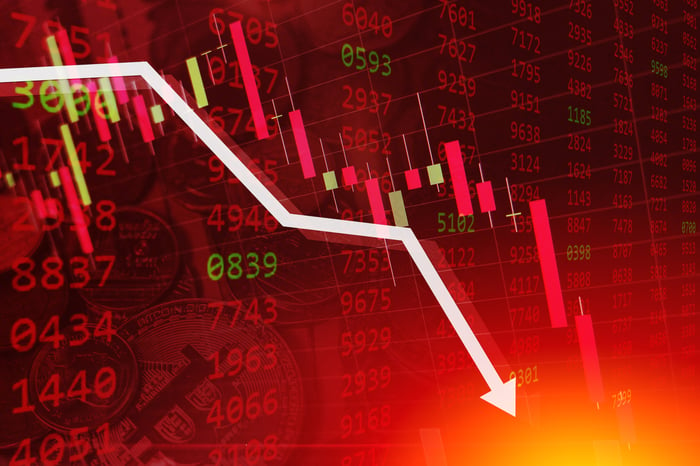What happened
The duration of the global semiconductor shortage just keeps getting shorter -- and with it, investor confidence in semiconductor stocks like Advanced Micro Devices (AMD 1.33%), which closed down 6.1% Tuesday.
Granted, a whole lot of stocks closed down today (the entire S&P 500 lost 2% on average), as rising interest rates spooked growth investors. But in the case of AMD, there seems to be a separate factor at work.

Image source: Getty Images.
So what
If you recall, market researcher International Data Corporation (IDC) predicted last week that the dearth of semiconductors, which has hamstrung markets for everything from PCs to automobiles over the past year, will begin easing later this year. Then, "the industry will see normalization and balance by the middle of 2022, with a potential for overcapacity in 2023 as larger scale capacity expansions begin to come on line toward the end of 2022."
Tesla CEO Elon Musk, too, has expressed the opinion that the semiconductor shortage will be "short term I think." And on Tuesday, AMD CEO Lisa Su rounded out the list, confirming that both IDC and Musk are most likely correct.
Speaking at the Code Conference in Beverly Hills, California, reports CNBC, Su pointed to a number of new semiconductor manufacturing plants coming online over the next few months as evidence that, while supplies will remain "likely tight" through the first half of next year, the chip shortage may end sooner than some investors expect.
Now what
What does that mean for the future? Chip companies began investing in infrastructure to make more chips "perhaps a year ago," says Su. Now, "it might take, you know, 18 to 24 months to put on a new plant." But for a plant started a year ago, that means that there's only six to 12 months left to go before that plant starts churning out chips.
This implies that by somewhere between the second quarter of 2022, and at the latest, the fourth quarter of 2022, chip supply should begin reaching the level necessary to fulfill even surging chip demand. That's good news for consumers -- good news, too, for automotive and other companies that have been starved for chips of late. As 2022 rolls over into 2023, however, and the potential for overcapacity begins to loom, it could be bad news for profits at AMD and its peers.
But such is the risk of investing in cyclical industries.





